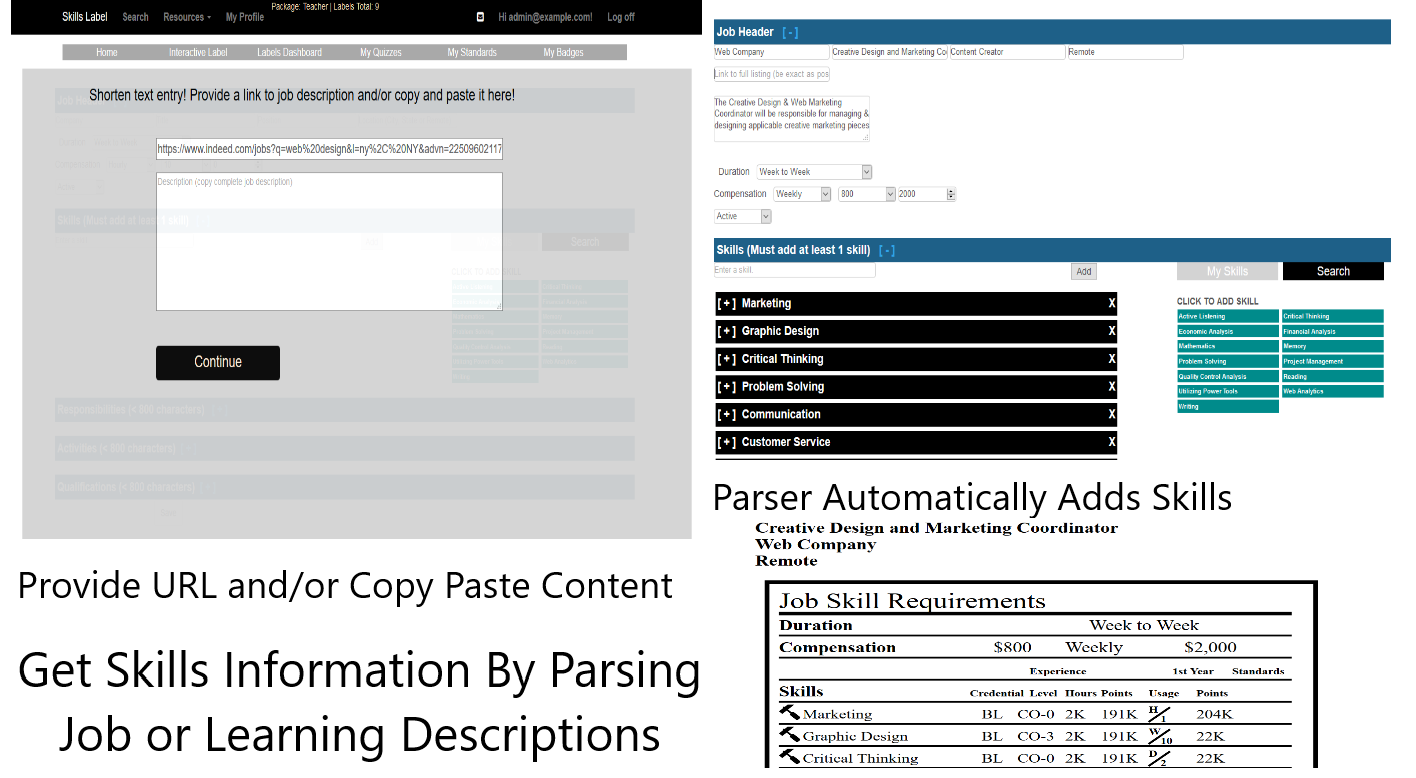Learning and job labels are not meant to replace the textual, context driven learning and job descriptions. The format of a job description is well established. Instead, I suggest a learner or job seeker narrows down choices by comparing labels, then clicks on a link to view the full description. Regardless, a new parsing feature uses the context in these descriptions to derive skills and related content on the labels.
Some of my general complaints with many of these descriptions: unnecessarily long; lack of quantitative data; and generic. For example, in LinkedIn, a job poster starts the description with already created content. Four value propositions of the labels are:
- Quantifies the expectations and requirements.
- Sets up an interface to make quick comparisons.
- Connects learning expectations with job requirements (pathways).
- Establishes a familiar display (fits on a smartphone screen, no need to scroll up-down or left-right).
Two full spring semesters, I worked with graduate students, professors, and teachers to improve the user interface (through formal testing). The results showed building a label takes around a minute. (My observation watching users in the application) users do not like text entry (particularly with repeat information) and spending time trying to figure out how an interface works.
A new parsing feature speeds up the process and learning curve in using the application. A parser reads a block of content from a URL (website) and/or text copied into a textbox. For a job label, the content is a job description (but could be anything that relates to a job posting). For a learning label, the content could be a review of the learning resource, an online catalogue, or part of a lesson plan.
At this stage, the parser focuses on defining skills from the content fed into the application. The parser looks for direct references to skills and other semantics to suggest matches (such as interests, traits, job attributes, and fields / disciplines). Skills get added to the labels automatically, ranked in an order of match strength.
The next steps are to verify the inclusion of each skill on the label (delete unnecessary options), set the expectations and requirements, add any missing skills, and put them in the sort order to appear on the respective label. Automatically getting a skill set saves times, helps with accuracy, and allows users to focus on defining learning expecations and job requirements.
